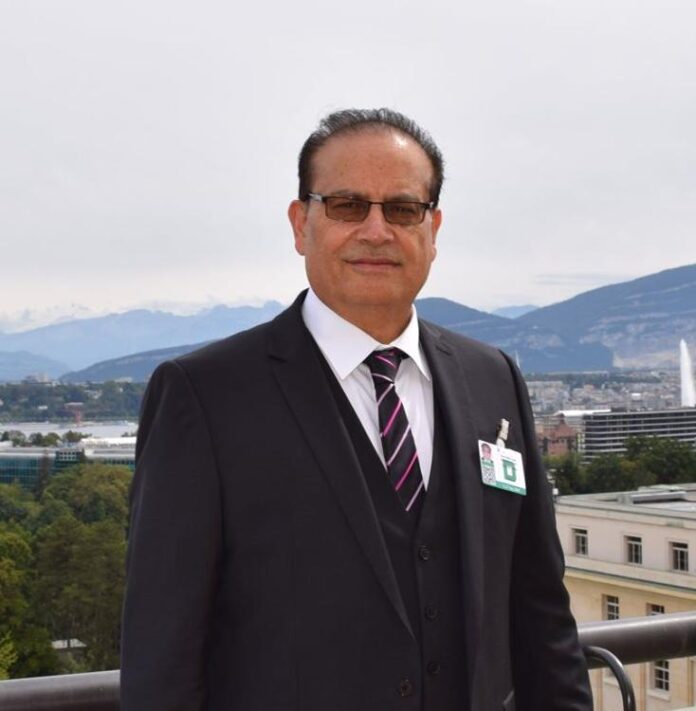Qamar Bashir
The Tehrik-i-Taliban Pakistan (TTP) and Baloch Liberation Army (BLA), despite their diametrically opposite narratives and goals, converge in their objective. Both groups appear to share common financiers, trainers, and external backers. While they operate with different narratives and methodologies, their activities serve a unified purpose: destabilizing Pakistan, undermining Chinese investments, and promoting India as a regional power to counter China’s influence in South Asia.
These militant organizations act as instruments to achieve broader transnational, regional, national, and local objectives. At the international level, they fit into a strategy resembling a modernized version of the USA’s Marshall Plan, aimed at containing China’s influence, particularly in South Asia, by disrupting Chinese interests through financial and economic means, and by using groups like the TTP and BLA to challenge China’s presence in the region.
This strategy is facilitated by utilizing Afghan territory as a base, with Indian operatives in Afghanistan acting as conduits to cultivate rogue groups, particularly the Islamic State Khorasan Province (ISKP), Al-Qaeda, the Tehrik-i-Taliban Pakistan (TTP), and the Haqqani Network and smaller groups like the East Turkestan Islamic Movement (ETIM) and the Islamic Movement of Uzbekistan (IMU). These outfits maintain complex relationships, with shifting alliances based on interests, tribal affiliations, and ideological differences.
They are employed by international intelligence networks to carry out operations across Pakistan’s Northern Areas, KP province, Islamabad, Punjab, and Sindh, often exploiting religious narratives of imposing Shariah.
The Baloch militant organizations are spearheaded by the Baloch Liberation Army (BLA), target security forces, infrastructure, and Chinese investments, especially CPEC projects. Other significant groups include the Balochistan Liberation Front (BLF), led by Dr. Allah Nazar Baloch, and the Baloch Republican Army (BRA), founded by Brahamdagh Bugti. The United Baloch Army (UBA), a BLA splinter group led by Mehran Marri, and the Balochistan Liberation United Front (BLUF) also carry out attacks against Pakistani interests. The Baloch Raaji Aajoi Sangar (BRAS), an umbrella organization uniting the BLA, BLF, BRA, and UBA, coordinates attacks on CPEC projects. These groups, motivated by demands for greater autonomy or independence due to political, economic, and resource-related grievances, frequently resort to violence to achieve their objectives.
The containment of China in South Asia manifests in various forms, particularly in Pakistan. Under the China-Pakistan Economic Corridor (CPEC), China has invested around $70 billion, and a second phase of CPEC of similar magnitude has been launched. Despite these massive investments in Pakistan’s $226 billion economy, which should have accelerated development and prosperity, their impact has been undermined by creating political instability. This included orchestrating a regime change when the GDP growth reached 6%, which then plunged into negative territory.
The management of Pakistan’s economy was effectively taken out of its control and handed over to the International Monetary Fund (IMF), which began micromanaging the country’s financial affairs. This, combined with a series of legal, social, political, and constitutional crises, hindered Pakistan’s progress, reversing its financial and economic gains.
Simultaneously, international forces fueled insurgent, separatist, terrorist, and criminal activities, increasing attacks on Pakistan’s state institutions, especially targeting the army and economic infrastructure. These groups destroyed bridges, highways, and other assets, killed civilians, and fanned religious and ethnic divisions.
Initially, these attacks targeted Pakistani security forces and the local population, but they escalated to involve international interests by targeting Chinese nationals associated with CPEC projects. This was further extended when militants attacked a convoy of ambassadors from various countries, even those with no direct connection to China’s interests, reflecting a broader strategy to disrupt China’s ambitions for international economic expansion.
The Baloch and TTP insurgents share both similarities and differences in their operations. They have common financial sources, with international intelligence agencies, primarily operating through contacts in Afghanistan, providing funding, training, intelligence, weapons, and religious, political, or ethnic motivations. These groups also generate income through charity, blackmail, and smuggling.
International agencies have effectively divided responsibilities between the two groups. The TTP focuses on targeting the state of Pakistan and Chinese interests across the country, excluding Balochistan, where Baloch insurgents are tasked with destabilizing the province and undermining both Pakistani and Chinese interests. These agencies supply highly sensitive information, precise target locations, and advanced weaponry to enhance the effectiveness of both groups.
Operating like business entities, these insurgent groups bid for assignments, showcasing their skills, weaponry, and expertise to carry out terrorist attacks of varying scales and complexity. Upon completing their objectives, they submit video, audio, and photographic evidence to claim financial rewards. This compensation enables them to recruit new members, support their families, reinvest in training, acquire more lethal weapons, strengthen their intelligence networks, and enhance their capabilities to inflict greater damage on their assigned targets.
To counter these insurgent groups, China and Pakistan should adopt similar methods, utilizing advanced technology, financial incentives, and strategic engagement to redirect the groups’ efforts. By offering them better compensation than their current backers, they can be guided toward targeting common enemies, using the latest technologies to identify threats and protect shared interests.
In parallel, China and Pakistan should implement comprehensive short- and long-term strategies to uplift communities in erstwhile FATA, the Northern Areas, and Balochistan. This involves developing marketable skills among the local population, establishing credible industrial infrastructure to absorb the adult workforce, and investing in road and street infrastructure, housing, commercial centers, and duty-free border markets to integrate the smuggling economy into the mainstream. It is essential to provide access to water, electricity, gas, and other necessities, while promoting cultural and social development.
Furthermore, it’s crucial to ensure these populations have a stake in CPEC-1 and CPEC-2, granting them ownership and benefits from natural resources in their regions. The state machinery must serve the people of Pakistan impartially, recognizing its role as a facilitator rather than an occupying force. Both the Pathan and Baloch communities should feel empowered, respected, and valued, rather than marginalized, exploited, or deprived of national resources by the groups dominating the federation or wielding kinetic control.
Qamar Bashir
Former Press Secretary to the President
Former Press Minister to the Embassy of Pakistan to France
Former MD, SRBC, CEO, ATV

















